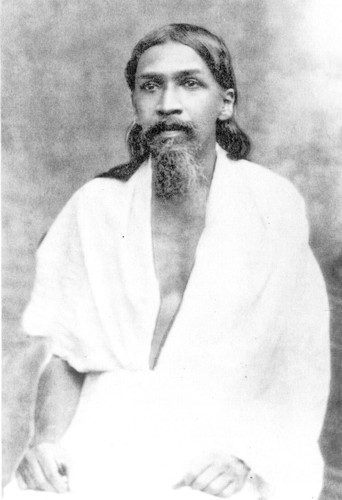
Pre-colonial Learning centers in Bengal
Before 1757, two well-known centers of excellence, for learning, flourished in Bengal—Navadvip/Nabadwip and Bhatpara. And then there were a large number of lesser-known centers such as; [1/9]
Before 1757, two well-known centers of excellence, for learning, flourished in Bengal—Navadvip/Nabadwip and Bhatpara. And then there were a large number of lesser-known centers such as; [1/9]
Ambika-Kalna, Kamalpur, Uttarpara, Uta, Calcutta, Kaugachhi, Kumarhatta, Kusdvip, Kotalipara, Kond-Kandi, Konnagar, Guptipara, Burdwan, Bakla, Bali, Bansberia, Mulajor, Meghnar-purbakul, Maimansingh, Jessore, Khulna, Santipur, Sonargaon, and Mahesvardih. [2/9]
The community of scholars residing in these places ran academies of learning known as tols and catuspathis.
During the pre-colonial era, these institutions became virtually synonymous with the tradition of Smriti and Nyaya. [3/9]
During the pre-colonial era, these institutions became virtually synonymous with the tradition of Smriti and Nyaya. [3/9]
Dines Chandra Bhattacharya’s seminal work, Vange Navya Nyaya Carca (The Study of Navya Nyaya in Bengal), and Panchanan Mondol’s huge collection of private letters provide a long list of these institutions, run by reputed Acharyas.[4/9]
Further, there is no evidence to suggest that these institutions were either controlled or managed by the state. These institutions were not run on professional lines. They were part of the guru’s household where students used to stay. [5/9]
The relations between the teachers & the taught were not confined only to academic instruction. The teacher was expected to act as a father & a role model in instilling moral values and molding an estimable character. [6/9]
On the completion of his studies, the student would receive titles from his preceptor- depending on the merit and quality of his original work- tarkalankar, nyayalankar, siromoni, sastri, kavyalankar, vyakarantirtha, and so on. [7/9]
After successfully obtaining his ‘degree’, the student could open his own ‘tol’. Even a scholar’s wife played a vital role in sustaining the scholarly pursuit- a fact revealed in an anecdotal account of a renowned scholar Mahamahopadhyay Kamaksanath Tarkabagis. [8/9]
His teacher’s (Bhubanmohan Tarkabagis) wife was a keen listener to the debates and discussions in the tol. She used to offer Kamaksanath more milk, depriving her own infant son, as she felt that the student needed more nourishment for his rigorous pursuit of knowledge. [9/9]
~ Reference ~
𝘉𝘩𝘢𝘵𝘵𝘢𝘤𝘩𝘢𝘳𝘺𝘺𝘢-𝘗𝘢𝘯𝘥𝘢, 𝘕. (2008). 𝘈𝘱𝘱𝘳𝘰𝘱𝘳𝘪𝘢𝘵𝘪𝘰𝘯 𝘢𝘯𝘥 𝘐𝘯𝘷𝘦𝘯𝘵𝘪𝘰𝘯 𝘰𝘧 𝘛𝘳𝘢𝘥𝘪𝘵𝘪𝘰𝘯: 𝘛𝘩𝘦 𝘌𝘢𝘴𝘵 𝘐𝘯𝘥𝘪𝘢 𝘊𝘰𝘮𝘱𝘢𝘯𝘺 𝘢𝘯𝘥 𝘏𝘪𝘯𝘥𝘶 𝘓𝘢𝘸 𝘪𝘯 𝘌𝘢𝘳𝘭𝘺 𝘊𝘰𝘭𝘰𝘯𝘪𝘢𝘭 𝘉𝘦𝘯𝘨𝘢𝘭. 𝘖𝘹𝘧𝘰𝘳𝘥
𝘉𝘩𝘢𝘵𝘵𝘢𝘤𝘩𝘢𝘳𝘺𝘺𝘢-𝘗𝘢𝘯𝘥𝘢, 𝘕. (2008). 𝘈𝘱𝘱𝘳𝘰𝘱𝘳𝘪𝘢𝘵𝘪𝘰𝘯 𝘢𝘯𝘥 𝘐𝘯𝘷𝘦𝘯𝘵𝘪𝘰𝘯 𝘰𝘧 𝘛𝘳𝘢𝘥𝘪𝘵𝘪𝘰𝘯: 𝘛𝘩𝘦 𝘌𝘢𝘴𝘵 𝘐𝘯𝘥𝘪𝘢 𝘊𝘰𝘮𝘱𝘢𝘯𝘺 𝘢𝘯𝘥 𝘏𝘪𝘯𝘥𝘶 𝘓𝘢𝘸 𝘪𝘯 𝘌𝘢𝘳𝘭𝘺 𝘊𝘰𝘭𝘰𝘯𝘪𝘢𝘭 𝘉𝘦𝘯𝘨𝘢𝘭. 𝘖𝘹𝘧𝘰𝘳𝘥
• • •
Missing some Tweet in this thread? You can try to
force a refresh












